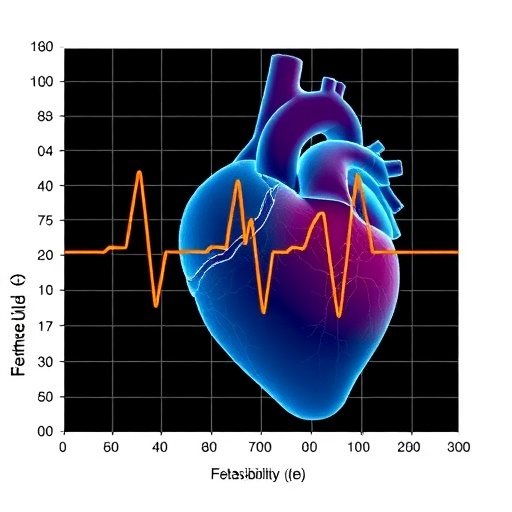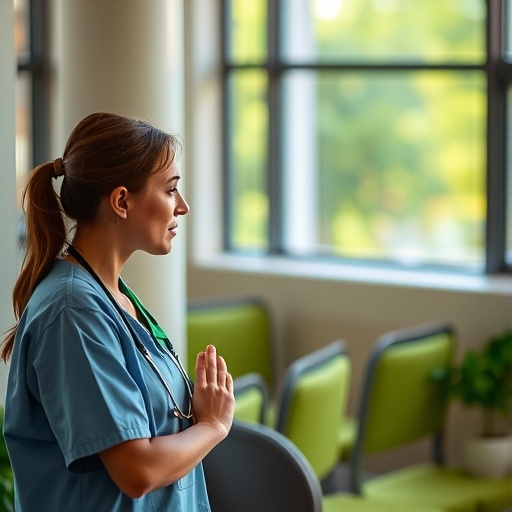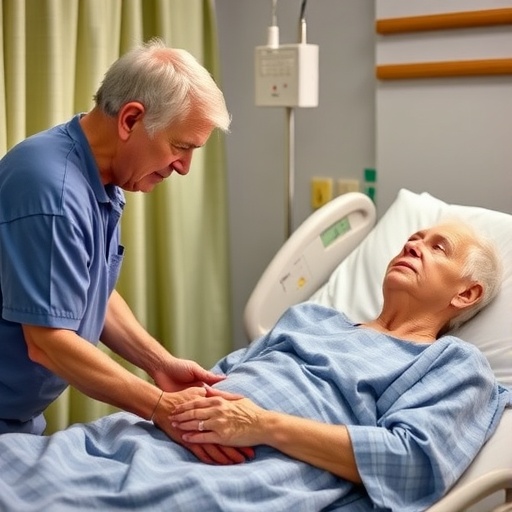In the ever-evolving landscape of biomedical engineering, recent advances continue to shed light on cardiovascular health, particularly following debilitating events such as strokes. A cutting-edge feasibility study published in BioMedical Engineering OnLine offers novel insights into heart rate variability (HRV) dynamics in patients recovering from stroke, employing an innovative biofeedback-enhanced robotics-assisted tilt table (RATT). This research pioneers a sophisticated approach to monitoring and controlling heart rate (HR) during rest and exercise, providing groundwork for future therapeutic strategies and rehabilitation protocols.
At the core of this study lies the concept of HRV, a complex physiological phenomenon representing the fluctuations in intervals between heartbeats, known as RR intervals. HRV serves as a crucial marker of autonomic nervous system function and cardiovascular health. Variations in HRV are indicative of the intricate balance between the sympathetic and parasympathetic branches that regulate cardiac function. Stroke survivors often experience autonomic dysregulation, making HRV a compelling target for clinical investigation.
The researchers recruited twelve post-stroke patients, averaging 55.3 years of age, with a predominance of female participants, to engage in a two-session experimental protocol. The first session focused on familiarizing patients with the RATT system and calibrating the biofeedback mechanisms responsible for maintaining a predefined HR setpoint during exercise. This calibration was essential for establishing an automatic feedback control loop, ensuring precise HR modulation during subsequent physical activity.
In the second session, participants underwent a structured sequence comprising fourteen minutes of rest, followed by twenty-one minutes of active exercise on the tilt table. The exercise phase was uniquely controlled—heart rate was kept constant through real-time biofeedback from a chest-belt sensor measuring HR, with the system adjusting physical parameters to counteract cardiovascular drift. This approach minimized confounding factors such as fatigue or stress-induced HR elevations, allowing for a clearer analysis of time- and intensity-dependent HRV changes.
Data acquisition utilized raw RR intervals, capturing the minute-to-minute heartbeat spacing essential for HRV computation. The team segmented the rest period into two equal intervals (0–7 minutes and 7–14 minutes) and similarly divided exercise intervals (5–13 minutes and 13–21 minutes) to assess temporal changes. This segmentation underscored the dynamic nature of HRV, revealing nuanced physiological responses during rest and controlled exertion in the post-stroke cohort.
Findings demonstrated unequivocal reductions in HRV during exercise compared to rest, reflecting typical autonomic shifts favoring sympathetic dominance under physical stress. Interestingly, HRV values during the initial rest period (0–7 minutes) were lower than those observed in the latter half (7–14 minutes), correlating with a subtle reduction in resting HR over time. This pattern suggests an adaptive autonomic recalibration as the body stabilizes after positioning on the tilt table.
During exercise, a distinct time-dependent decline in HRV was documented. Early-phase exercise (5–13 minutes) exhibited higher HRV than the later phase (13–21 minutes), indicating progressive autonomic modulation with ongoing activity, even under constant HR conditions. This phenomenon highlights the sensitivity of HRV as a marker for physiological strain and cardiac adaptability during stroke rehabilitation.
The study’s application of a biofeedback-enhanced RATT introduces a groundbreaking methodology for heart rate-controlled exercise in neurologically impaired populations. By combining robotics and real-time cardiovascular monitoring, this platform surpasses traditional rehabilitation devices, offering precise control over exercise intensity and physiological load. Such precision is vital for tailoring rehab interventions to optimize cardiovascular conditioning without overburdening compromised autonomic systems.
Beyond clinical applications, the implications of this research extend into the realm of personalized medicine. Understanding the temporal and intensity-dependent profiles of HRV post-stroke enables clinicians to prescribe exercise regimens attuned to individual autonomic responsiveness. This approach promises to enhance safety, efficacy, and patient adherence, potentially accelerating functional recovery and reducing secondary cardiovascular risks.
Furthermore, the study’s methodology paves the way for integrating advanced feedback control systems in other cardiovascular and neurological rehabilitation contexts. The seamless blend of technology and physiology showcased here exemplifies the future direction of bioengineering—where real-time data inform adaptive therapeutic interventions, minimizing human error and maximizing patient-specific outcomes.
Importantly, the investigation also provides foundational data supporting the design of larger-scale clinical trials. The feasibility demonstrated herein confirms that stroke patients can tolerate and benefit from controlled exercise protocols governed by robotic assistance and biofeedback, setting the stage for comprehensive studies evaluating long-term impacts on autonomic function and overall rehabilitation progress.
In summary, this pioneering work illuminates the nuanced interplay between heart rate variability and controlled exercise in stroke survivors, facilitated by an ingenious biofeedback robotics-assisted system. By elucidating the temporal dynamics of HRV at rest and during exertion, the study offers critical insights that could revolutionize cardiovascular rehabilitation. The potential to harness such technology in clinical practice heralds a new era of precision medicine for stroke recovery, underscoring the vital role of biomedical engineering in transforming medical care.
As biomedical research continues to converge with innovative engineering, studies like this highlight the transformative power of interdisciplinary collaboration. The ability to quantifiably monitor and modulate cardiac function in vulnerable populations is not only a testament to technological progress but also a beacon of hope for improved quality of life and functional independence among stroke survivors worldwide.
Subject of Research: Changes in heart rate variability at rest and during exercise in patients after a stroke using biofeedback-enhanced robotics-assisted tilt table technology.
Article Title: Changes in heart rate variability at rest and during exercise in patients after a stroke: a feasibility study
Article References:
Saengsuwan, J., Brockmann, L., Schuster-Amft, C. et al. Changes in heart rate variability at rest and during exercise in patients after a stroke: a feasibility study. BioMed Eng OnLine 23, 132 (2024). https://doi.org/10.1186/s12938-024-01328-7
Image Credits: AI Generated
DOI: https://doi.org/10.1186/s12938-024-01328-7
Tags: autonomic nervous system functionbiofeedback-enhanced rehabilitationcardiovascular health recoveryclinical investigation of HRVexercise protocols for stroke rehabilitationheart rate variability post-strokeHRV dynamics in stroke patientsinnovative biomedical engineering solutionsrobotics-assisted tilt table therapyRR intervals and heart healthstroke survivor cardiovascular monitoringtherapeutic strategies for stroke recovery





